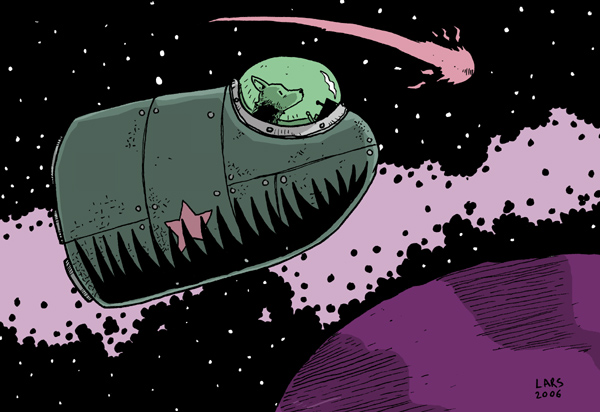Why Did Russia Only Send Female Dogs to Space?
It's all about pee.

*Insert Bitch Planet joke here.*
A little while ago I found myself on Twitter and was cheesed off (not an uncommon occurrence) to see that one of my favorite nerdy outlets had tweeted the fun science fact that Valentina Tereshkova was the “first female” in space. I mean, not only does referring to women as “females” sort of inextricably link your speech to PUAs, aspiring PUAs, gross OKCupid accounts and make you sound like a Ferengi… once you’re calling Tereshkova a “female,” the statement isn’t even true anymore! There were tons of female animals who went to space before any country sent a human woman up there. And some of them even came back!
Perhaps most famous of the animals we’ve sent into space is Laika, a small Russian dog, the first living being to complete an orbit around the Earth, and the first one to die in the pursuit of manned space flight. Laika was female, and so were all of her canine comrades in the Soviet space program. Why? Well, space constraints, and how they came into conflict with a particular habit of male dogs, as Damon Murray, creator of a book on Russian cosmonaut dogs and their relationship with the space program as well as the Russian public, explains in a fascinating Collectors Weekly article:
The problem of feeding the dogs in zero-gravity was solved by bonding nutrients with agar, a jelly-like substance. This “jelly” could then be easily consumed, minimizing waste. The most tricky obstacle for the dogs traveling into space was to find a way for them to relieve themselves in such unusual conditions. Although their suits had special receptacles for urine and feces, it was difficult to train the dogs to use them. They prefer to relieve themselves outdoors, never inside a room or a cockpit, and certainly not inside clothes. This process was unnatural for the dogs, only those who took to it more easily were selected. For orbital flights, all the dogs were exclusively female: As there was no room in the cabin to cock their legs, they were better suited to space.
Of course, as most long-time dog owners will tell you, there are male dogs out there who squat, and female dogs who cock a leg, but it’s understandable that in a program with as many variables as an orbital space craft, you’ll want to eliminate a few. Other things central to choosing a cosmonaut dog? How well they photograph in black and white, for the ease of documentation and publicity.
You can read all of Collectors Weekly’s article about Soviet space dogs here.
(top pic by Larsony on DeviantArt)
Are you following The Mary Sue on Twitter, Facebook, Tumblr, Pinterest, & Google +?
Have a tip we should know? tips@themarysue.com